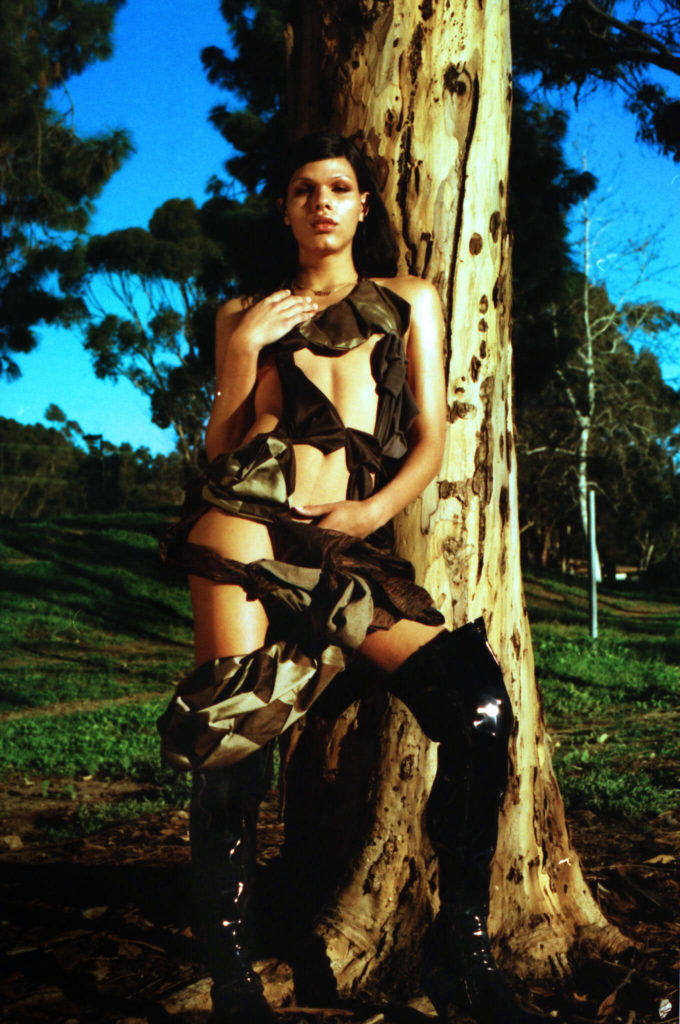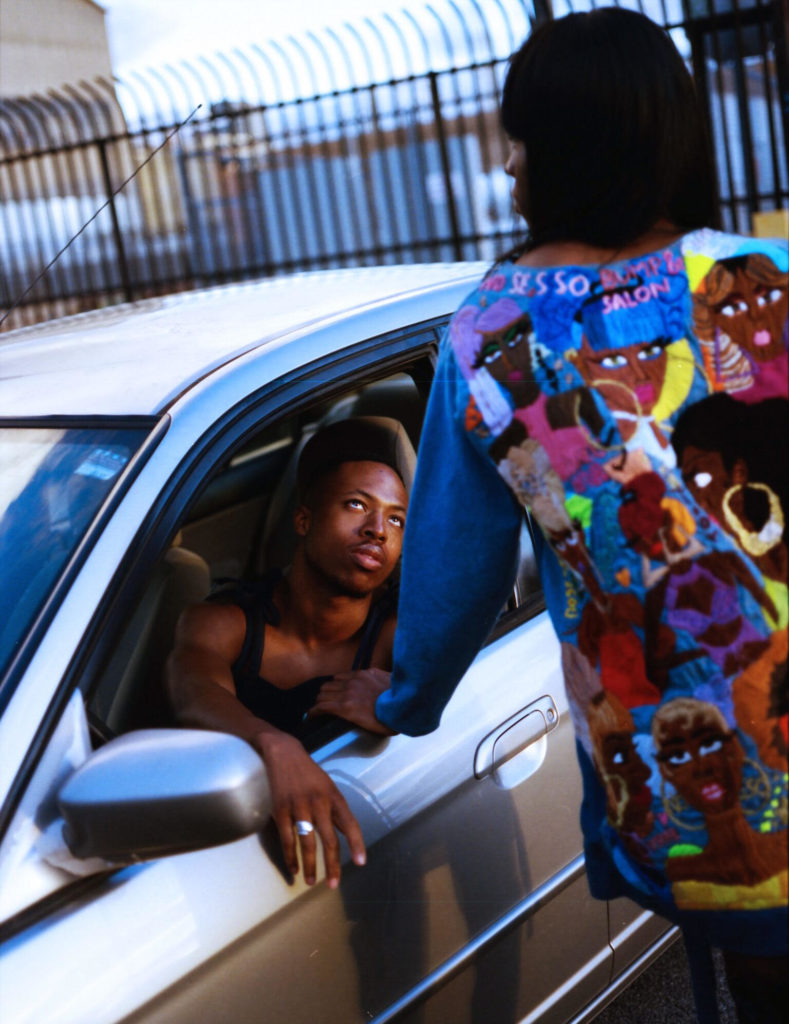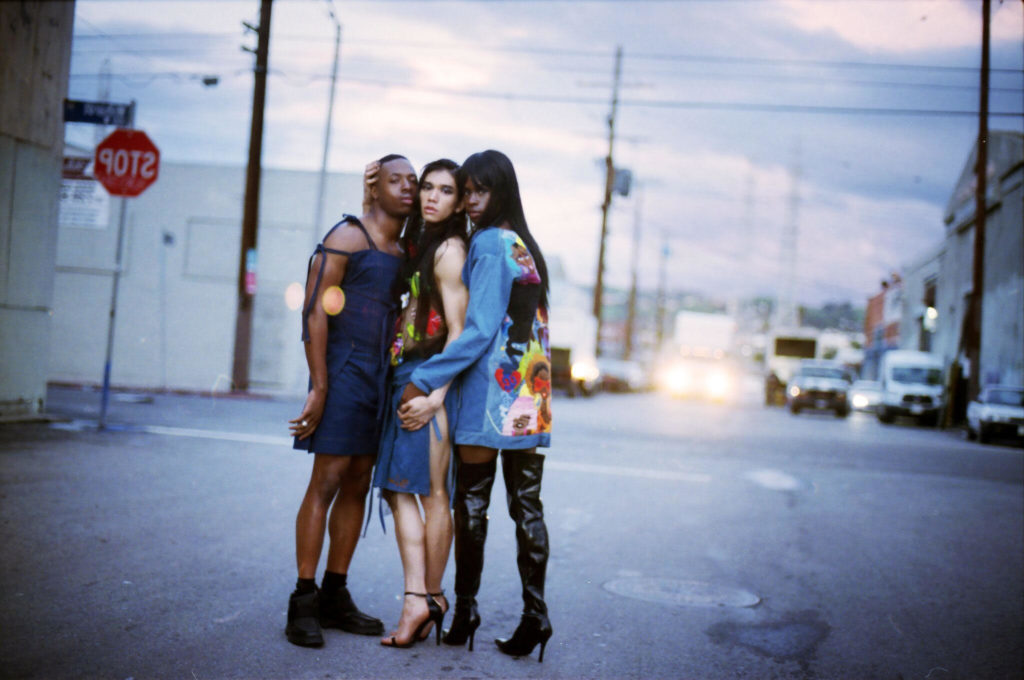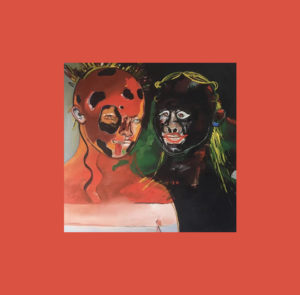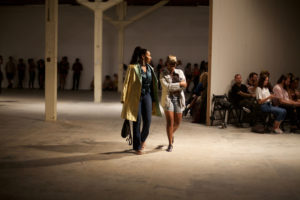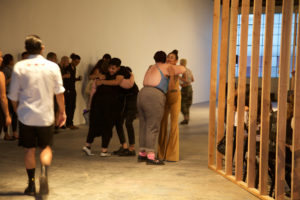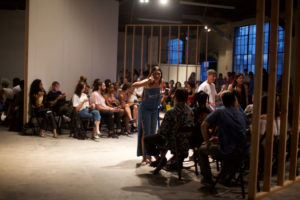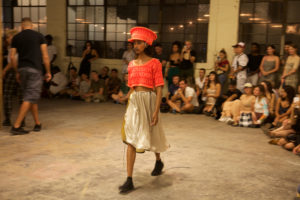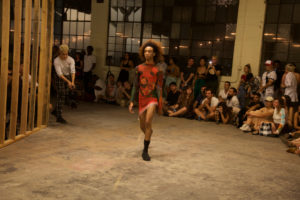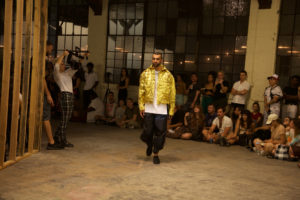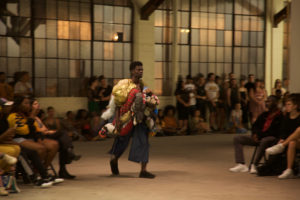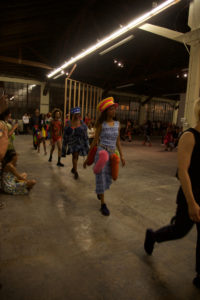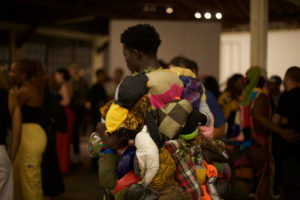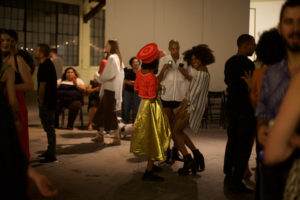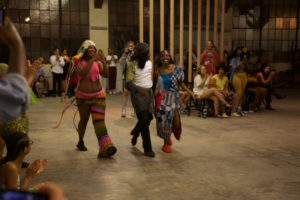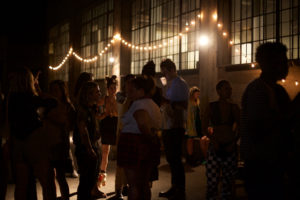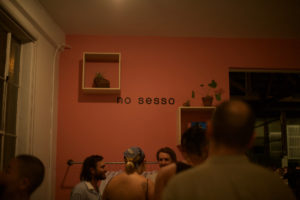No Sesso Fall/Winter 2017-18 Runway Show
- Pierre Davis interviewed by Janeth Aparicio
Ooga Booga employee, Janeth Aparicio, recently sat down with No Sesso’s designer and creative director, Pierre Davis, ahead of No Sesso’s upcoming installation at OB’s second location and fashion show at 356 Mission Road on September 2, 2017.
Below they discuss the workings of the line and the brand’s connections to Los Angeles!
Janeth Aparicio: So, I’m just gonna introduce myself. I’m Janeth. I work with Ooga Booga. And if you would introduce yourself.
Pierre Davis: I’m Pierre Davis, I’m the creative director and designer for No Sesso.
JA: Cool. Okay, so can you just give us some background first about yourself and then about No Sesso.
PD: Yeah, well I was born in South Carolina. My dad was in the military so I moved around a few places growing up. I lived in Seattle for like 7 years, and that’s where I started No Sesso in 2013. And then I moved to Hawaii before moving to LA. I was in Hawaii for 8 months and then I made the big move to LA and I brought No Sesso back in 2015. And we’ve just been working hardcore since then.
JA: Why did you decide to move to LA?
PD: I visited LA in 2013 during February and I instantly fell in love with the city. And then I was like… I wanna live here. I was here for like a week. The first year in LA was intense but I love LA.
JA: Who taught you sewing, embroidery and pattern design?
PD: As for as embroidery goes, I taught myself how to do it last year. I was like looking for a way to put the brand name onto garments without having it screen-printed and so I just embroidered it instead. As far as patterning, I went to school in Seattle for some time and I learned how to do some of the basics there.
JA: So for No Sesso, you’re the creative director and the designer. Who else makes up your team?
PD: Okay, so this is Arin Hayes. Arin is on the computer doing a lot of the marketing and PR. Arin’s like the handy person, they do everything having to do with business deals and all of that. Then there’s Leo King, and they’re the design assistant and assistant designer. Leo helps with a lot of the embroidery and we both go back and forth with concepts as far as making some of the clothes. And then we have J. Sims, who is the in-house stylist. J. is a very good friend of ours, and for the shoots that we do as far as like the campaigns and online media, they definitely help with all of that. I was looking for a book so I can show you. This is our spring/ summer campaign look book. We all worked on that together. Everyone in that book is a friend of ours.
That’s one thing about No Sesso. This collection we’re reaching out to a few people that I don’t know too much, but everyone else that works together they know them. Our runway is going to be really fun this year. But in that campaign book, we know everyone in there. They’re really good, dear friends of ours.
JA: This is beautiful! Are you going to sell this at the fashion show?
PD: Yes! And then Sanam works with us as well. Her and Arin work a lot together. Sanam, Arin, and J. are casting the show and checking out with sponsors.
JA: Cool. So going off of what you said about having a marketing person and making your own images, I feel like– going through your Instagram– it’s very evident who you are as a brand, what this brand means. Did you have a clear idea of this brand when you started No Sesso or was it more of an experimental process?
PD: I would say I definitely had a little bit of a concept, but as time progressed it grew bigger and we added to it. As time went by I also saw that I don’t want to do the standard of what you see in fashion today. It [the fashion industry] has definitely changed since when I first started No Sesso. But when I first started I was like “I don’t want to do what everyone’s doing as far as fashion.” I started off making the brand a little bit more political and as an outlet for other people to identify with.
JA: Yeah. I was gonna ask you this later, but I guess I’ll ask you right now because it ties into what you were talking about. I wanted to ask you about your experience navigating the LA fashion scene or the fashion industry in general.
PD: In general, I will say it has its ups and downs. There’ll be like one moment where a lot of people are contacting me for shoots and what not. This week has been so intense– everyone has been wanting to pull and reach out. And then, like any other business, there’s moments where everything’s a little dull and you’re like “Oh, what’s gonna happen now?” That’s when you take time out to see what you really want to do for the brand– or what I want to do for my brand–and just focus on different ways of elevating and making it different than what I constantly see on Instagram, online, and in stores.
As far as the fashion scene in LA, I have a couple of friends who are designers and we talk. Starting off, it’s a little rough because you have to find a target market and everyone is wanting to get into your brand or whatever.
JA: And what’s the process like for designing a collection…where does the inspiration come from, how do you organize that inspiration?
PD: A little bit of the inspiration always continues from the previous collection. A lot of the times my friends– and I tell them this all the time– they’re constantly my inspiration for designing. We have this really close community and that’s a big part of the brand. Just us having our own space where we’re connecting to each other one way or another.
JA: It’s sort of the brand as a space itself.
PD: And that’s what I also tell a lot of people as well when they ask. It’s for them, it’s for you. As far as other inspiration, we always get inspiration from movies. A lot of stuff also happens from how I’m feeling at that point in time. As I’m starting to design for the season, I base a lot of it off feelings and you’ll notice. Sometimes there’s a lot of color in my stuff and then sometimes it’s a whole bunch of neutral colors. It really depends on the tone that I’m trying to set. As far as inspiration, I’d definitely say friends, what’s going on around the world, and different street signs that I see and what’s happening in my neighborhood– the car shops and things like that.
JA: I also wanted to talk about the early No Sesso pieces. I was looking at them and they’re really about reconstructing and repurposing to the fullest extent. Could you just talk about whatever you want to talk about for those pieces?
PD: Yeah. Well, early No Sesso, that’s when I was really into working with denim. Denim was really easy for me to find because I could just go to the Goodwill bins in Seattle and it was just like $1.50 for a pound of clothes. So that was really cool. I liked working with leather a lot as well when I first started the brand. And so I would basically do the same thing: make my own patterns but repurpose the fabric and materials. There’s something about how timeless denim or leather can be. And just to reuse the materials and turning them into something else is, saving the planet in a way (laughs). Yeah, just using the resources you have at the moment. Making a collection is extremely expensive if you want it to be really good.
JA: There’s this Xicanx art practice called Rasquachismo and so it’s about taking literally whatever you have around you and making something out of it because you’re forced to be resourceful when you don’t have a lot. And your commentary reminded me of that.
PD: Yeah, totally. Yeah, I’m bringing a lot of fun patchwork into the new season again. Like taking some of the beginning of No Sesso and evolving it.
JA: So my next question is about the embroidery. Do you think that there’s an intimacy and familiarity when hand embroidering pieces?
PD: Absolutely. I think I really got into embroidery because I was, like I said, trying to find a way to put the name on the garments without screen printing. Then I got really obsessed with it because it was also a meditation outlet and so I started making these really intricate pieces. The jacket with all the girls on the back, the familiar aspect of that was that growing up I first got into fashion– believe it or not– from hair magazines. My mom always had these black women hair magazines and they would be called like Hype Hair or Black Hair, and you would see all of the big stars on them– like Mary J. Blige and Aaliyah and SWV, and everyone that had the best hair (laughs). They still have these magazines around, like if you go to the grocery store or something. But yeah, I would look at these magazines and I’d be like “Oh my goodness, their clothes are really cool.” I would sketch when I was younger and that would be my fashion resource at the time. That jacket was about a whole bunch of extravagant, really fun hairstyles that you see girls in that magazine wearing and just if you go to Compton or any predominantly black area inside any city where girls take care of their hair, nails, and what they’re wearing. That’s really important and that’s where that came from.
JA: I also wanted to ask you about the relationship between No Sesso and fashion to music and partying. So if you want to talk about that.
PD: Partying. We do like to have a good time (laughs). I feel like that’s kind of how I was able to start out my brand here in LA because I would wear a lot of the stuff that I made and everyone would be like “What are you wearing?”, and I’d be like “I made this” and they’d be like “I did not know you were a designer!” But, it’s also like nightlife for my community of people, the community that I hang out with all the time, it’s a safe space for us. Depending on the certain parties that we go to, it’s where we don’t have to worry about that bill that’s due tomorrow or that was due the day before or any other problems that are going on in the world. We have each other and we’re just dancing to good music. A lot of my friends are DJs here and just like… you feel it in the clothes when you wear it, it makes you feel like you wanna have a good time. It’s all about happiness and positive energy. As far as like musicians wearing it, I went to a concert earlier this year. My friend was like “I have these extra tickets to a show, do you want to come to it?” and I was like “Yeah!”. And then Erykah Badu happened to be on stage wearing No Sesso and I didn’t even know that was happening! It was my first time seeing her, first time knowing she was gonna wear No Sesso, everything. It was too many first times for one moment. It was pretty sick! And then there’s been other people that have pulled just via stylists. And I guess like as far as music and that kind of culture goes, it just has that young vibe, you know what I mean? It’s really fresh and refreshing. It’s all about creating that experience.
JA: What’s in the future for No Sesso both collection-wise and event/workshop wise?
PD: Okay. So, as you know, we’re debuting our Fall/Winter collection September 2nd and we’re collaborating with so many cool artists. It’s going to be a really great experience. I don’t want to say too much about the show. But I will say that it’s worth the wait and it’s going to be major. As far as the future goes, I definitely want to continue to do the embroidery workshops. We had one last week, it was at the Folk Art Museum and it was really cool. There were like 90 people that showed up to embroider. It was really intense. It was the first time that many people showed up. At first, I would get 20 people at a time– at most. I definitely want to continue to do those and find a way to do it so that I can show younger people how to embroider and continue to do it as a meditation practice. As far as the fashion part of it, I want to get into more stores and continue to design really fun collections and continue to change the way of fashion and how people see fashion, making something that everyone can relate to.
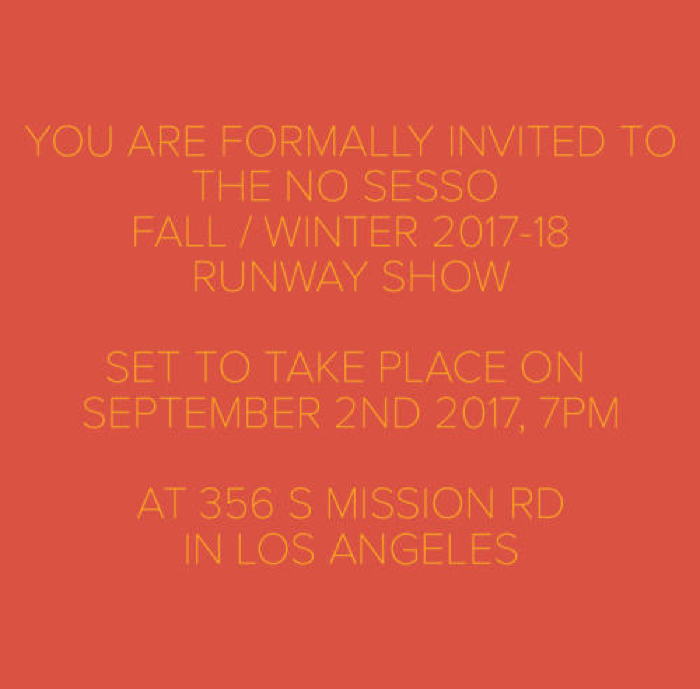
Janeth Aparcio is an employee of Ooga Booga and a former curatorial intern at 356 Mission

